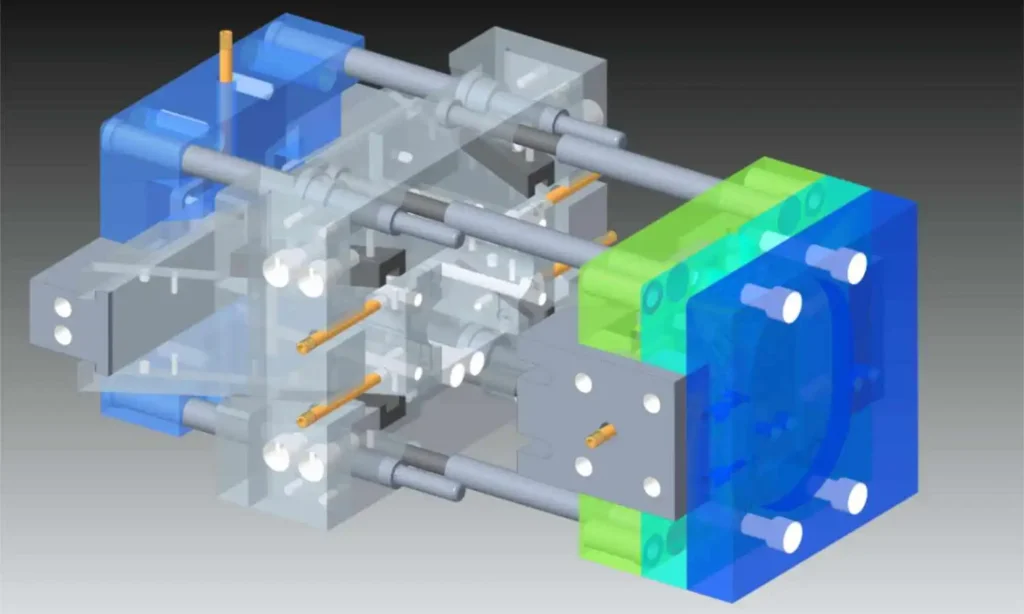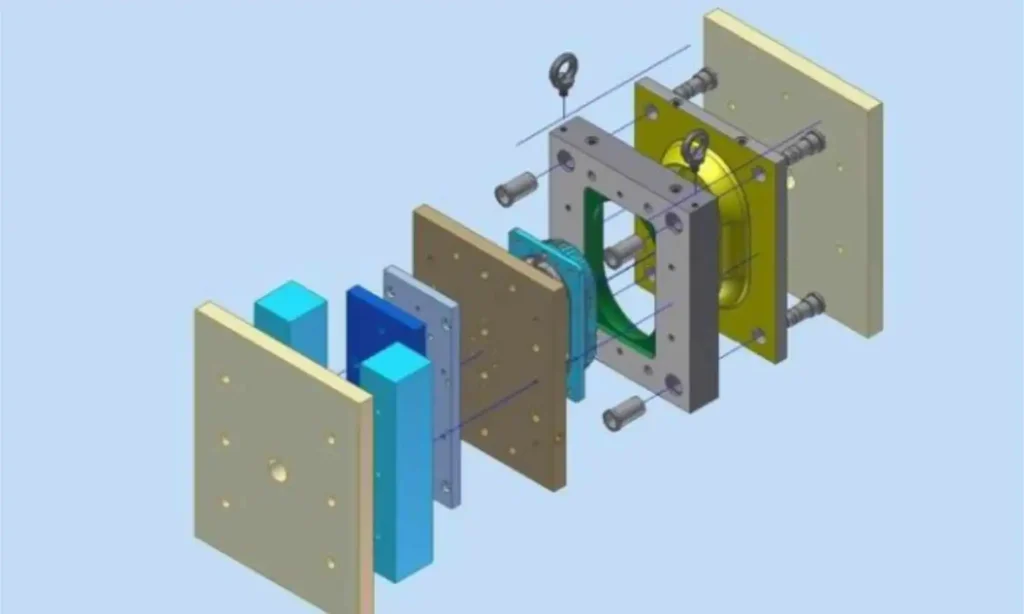| 製造工程 | プラスチック射出成形サービス
プラスチック金型製作サービス
発泡射出成形 |
| 部品材料 | ABS + PC |
| 金型タイプ | ラピッドツーリング |
| アプリケーション産業 | 自動車 |
| 表面処理 | スプレーペイント |
| 公差(精度) | 部品:±0.1mm(±0.004″)
金型:±0.05mm(±0.002″) |
注意事項当社は、すべての顧客と市場参入前の守秘義務契約を結んでいます。ご覧の症例はすべて、お客様との間で交わされたものです。いくつかの機密情報にはモザイクをかけています。すべての写真はJBRplasの内部撮影から撮影されたものです。
自動車用インサイドハンドルは、頻繁に使用されるために設計された重要な内装部品であり、人間工学に基づいた快適性、構造的完全性、美的統合性のバランスが求められます。その設計には通常、人間工学に基づいた曲線、強化された取り付けポイント、ドアパネルとのシームレスな組み立てを保証する隠しクリップ機構が含まれます。ハンドルの表面は、インテリアのスタイリングに合うようにテクスチャーや光沢が施され、内部のリブやボスは、かさばることなく強度を高めます。金型設計では、クリップ保持のためのアンダーカットに対処し、目に見える部分の一貫した表面品質を確保する必要があります。
自動車用インサイドハンドル製造における顧客要件
- 機能要件:
- 繰り返しの引っ張り力にも耐える高い機械的耐久性。
- ドアパネルや電子部品(パワーウィンドウスイッチなど)との正確な位置合わせ。
- 美的要件:
- フローマークやヒケのような欠陥のない、目に見える部分の完璧な表面仕上げ。
- ボリューム要件:
- 費用対効果の高い金型ソリューションで、中規模から大規模の生産量を実現します。
インサイドハンドルの製造課題に対するソリューション
- マルチスライダーシステム:クリップ保持や複雑な形状のアンダーカットに対応。
- テクスチャの複製:レーザーエッチングされた金型表面は、成形中に直接革の木目や光沢仕上げを再現します。
- コンフォーマル冷却:最適化された冷却チャンネルにより、サイクルタイムを短縮し、厚みから薄みへの移行における反りを防止します。
- 5軸CNC加工:取付ボスやクリップスロットなどの重要な形状に対して±0.05mmの公差を実現。
- 金型表面研磨:フローラインをなくすため、Aクラスの表面は鏡面仕上げ。
- 素材の選択:ガラス繊維強化ナイロン(PA6-GF)またはPC/ABSは、強度、耐熱性、表面仕上げに優れています。
- 注入パラメータ:バランスのとれた充填圧力と制御された溶融温度により、内部応力を最小限に抑えます。
機能規格
- 機械的強度:
- 500Nまでの引張力にも変形や破損を起こすことなく耐えます。
- 実使用をシミュレートするための50,000サイクル以上の疲労試験。
- 組立精度:
- クリップと取り付け穴の公差を±0.15 mmに抑え、シームレスな統合を実現。
- 表面品質:
- クラスAの表面には目に見える欠陥はなく、粗さの平均(Ra)は1.0 µm以下。
射出成形不良基準
- シンクマーク制御:
- 反り防止:
- 寸法精度:
- 公差±0.1mm以内の重要な特徴(クリップスロットなど)。
Q1.自動車用インサイドハンドルの射出成形時の耐久性はどのように確保するのですか?
- 素材の選択:ガラス繊維強化ナイロン(PA6-GF)は、高い引張強度と耐疲労性を備えています。
- 強化設計:内部リブとボスが応力を均等に分散。
- プロセス制御:最適化された保持圧力と冷却時間により、ボイドや弱点を防ぎます。
- テスト:機械的引張試験(最大500N)と繰返し疲労検証。
Q2.複雑なクリップ機構や人間工学に基づいたハンドル形状はどのように実現されているのでしょうか?
- 金型設計:マルチスライダーシステムとコラプシブルコアは、クリップのアンダーカットを形成します。
- シミュレーション・ソフトウェア:モールドフロー解析により、薄肉のエルゴノミックセクションへの均一な充填を実現します。
- 高精度加工:5軸CNCにより、滑らかなカーブと正確なクリップスロット(±0.05 mm)を実現。
Q3.インサイドハンドルの製造コストに影響を与える要因は何ですか?
- 材料費:強化エンプラ(PA6-GFなど)はコストが高いですが、耐久性には不可欠です。
- 金型の複雑さ:マルチスライド金型は初期金型費用を増加させます。
- 表面仕上げ:テクスチャーや光沢のある仕上げには、追加の金型エッチングや後加工が必要です。
Q4.自動車のインサイドハンドルに最適な素材とその理由を教えてください。
- PA6-GF(ガラス繊維入りナイロン):高強度、耐熱性、寸法安定性。
- PC/ABS:美観と耐衝撃性のバランスが取れたビジブルハンドル。
- TPE(熱可塑性エラストマー):ソフトタッチのオーバーモールドグリップに使用されます。
Q5.目に見えるハンドル表面のフローマークなどの表面欠陥を防ぐにはどうしたらよいですか?
- 金型研磨:Ra≦0.4µmに研磨されたクラスA表面。
- ゲートの最適化:サブゲートまたはホットランナーシステムは、フローラインを最小限に抑えます。
- プロセスチューニング:低い射出速度と高い溶融温度により、スムーズな材料フローを実現します。
このアプローチにより、自動車用インサイドハンドルは、高度な金型と材料科学により生産効率を最適化しながら、厳しい機能的・審美的基準を満たすことができます。







